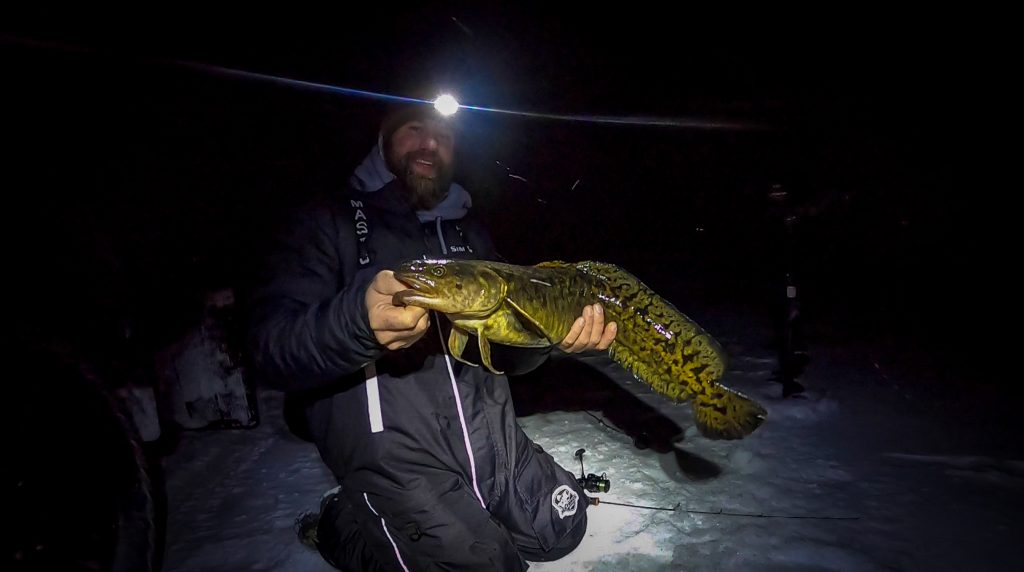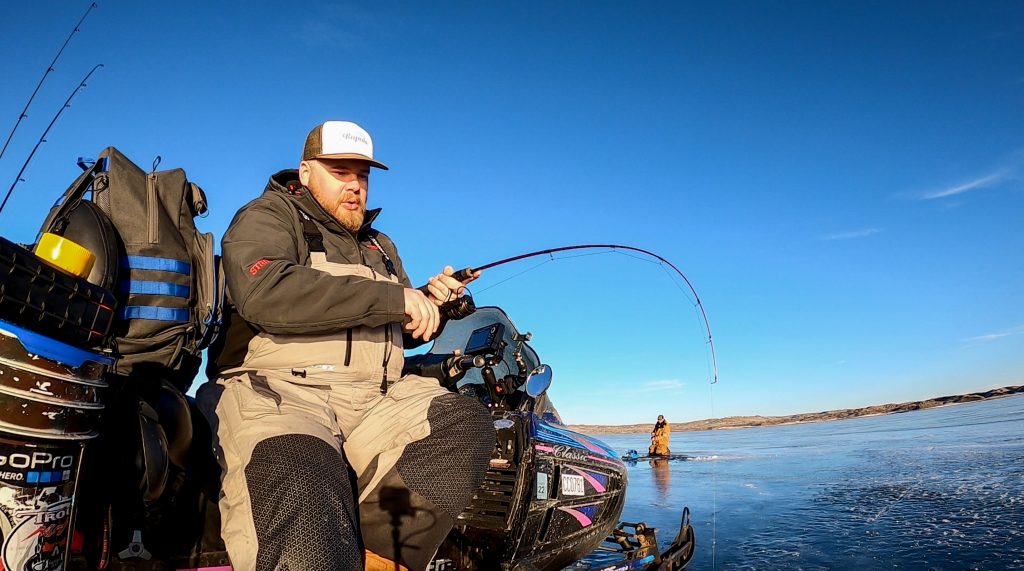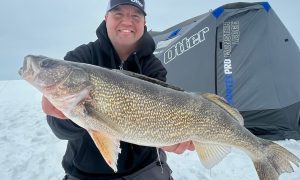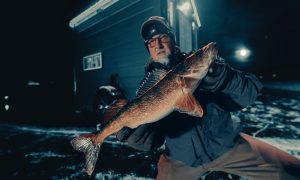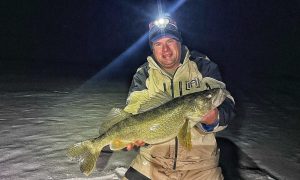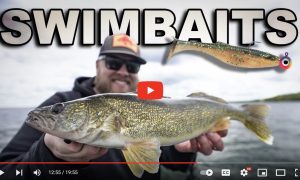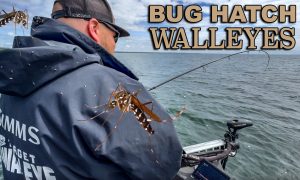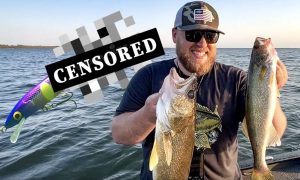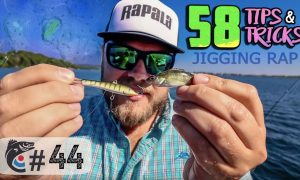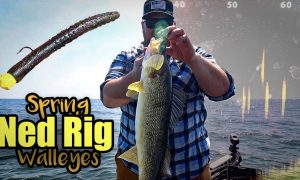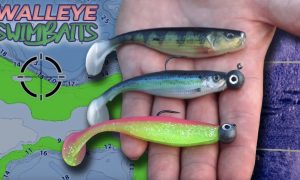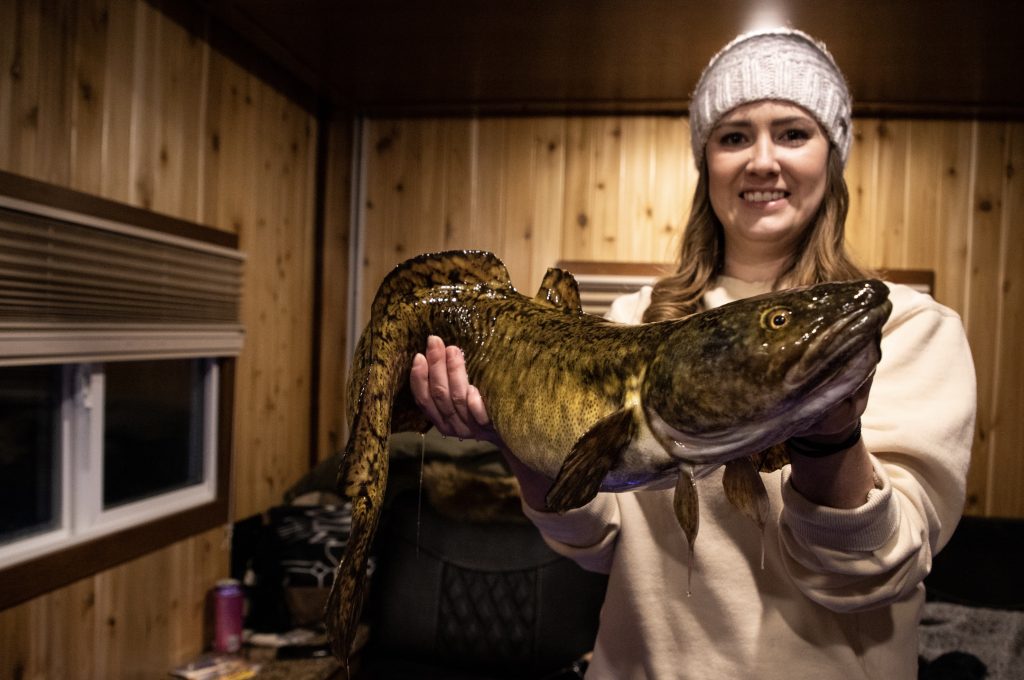
Ferocious, aggressive and awkwardly flexible, burbot are remarkable predators that have become one of my favorite species to target through the ice. The fight was what first got me hooked on this misunderstood water dragon – hook into just a schmedium-sized ‘pout and you’d swear you were pulling up a 27”+ walleye. The combination of their hefty guts and the rockstar-esque head banging is sure to slap a smile on even the burliest of beards.
For the love of burbot
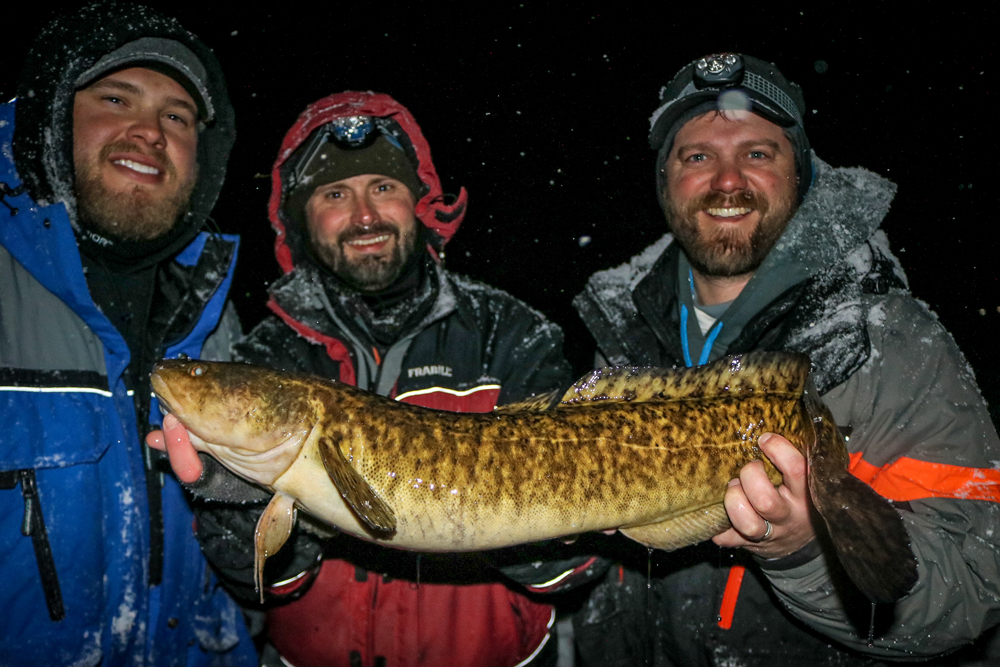
With a single whisker under its chin – just like I had up until my mid-twenties – I can’t see myself connecting with any other species of fish on a more personal level. I mean look how they rock that big belly with pride! If I could share bunk beds with one, I would – swapping stories until we fell asleep, both dreaming of that next bacon cheeseburger…. Even our sleep schedules would line up as they’re the night owls of the fish community.
Never eat right before going to bed? Burbot ignore the advice from all of those fancy nutrition magazines, regularly opting for the late-night snack run instead. While you can catch the occasional ‘pout during the day, the prime bite occurs after dark and well into the night.
Where to find ‘em
Note: The type of structure may be a little different for some of our Canadian neighbors waaaay up yonder, but how/what we catch ’em on is much the same.
Earlier in the season (late-Jan thru mid-Feb) do NOT overlook deep weededges at the bottom of steep breaklines – preferably off the edge of a large feeding flat. Burbot follow the food just like other predators.
Hard, sand- or gravel-bottomed humps can be killer in late-February and early-March when burbot spawn on bigger bodies of water. But I’m also a reeeeaaaal sucker for steep breaklines on the edge of sand flats where burbot will slide up to do their deed.
Some of the best bites I’ve ever been on have been a mile away from any rocks, and those belly draggers would even come up the hole with mud stuck to their guts to prove it. These fish are there because the area offers a great late-night menu, and burbot aren’t afraid to hit up the drive-through more than once.
During daylight hours: Early-on in the season, cruise the basin looking for water in the 40-60’ range near the deepest holes in the lake. These deep-water haunts may hold fish, but consider any fish caught during the daytime to be a bonus. The good news is that pinpointing these areas makes it easier to predict and follow their evening migration.
As the evening progresses: Slide up towards the base of the dropoff where the basin meets the bottom of the break. These areas will look like classic walleye structure, which is why you hear of so many ‘eye guys complaining about accidentally catching burbs. This breakline bite is usually best for the 1-2 hours past sunset.
After dark: Gradually work your way into shallower water until you’re fishing on top of the hump/flat that levels off in 10-20’. Focus on fishing the very edge of the top of the flat before it breaks off into deeper water.
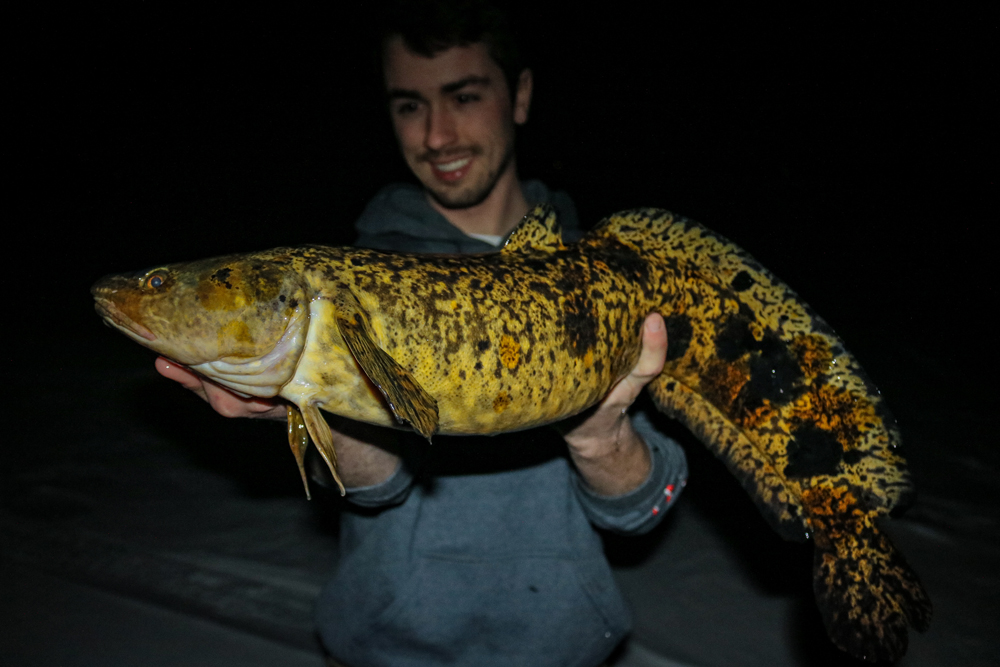
DAYTIME “SPAWN” BITE: Don’t be afraid to chase burbs during daylight hours as the spawn peaks. There’s typically a 7- to 10-ish day window (early March ’round these parts) where you can catch ’em all day long. And your best bite might literally be from 11am to 1pm.
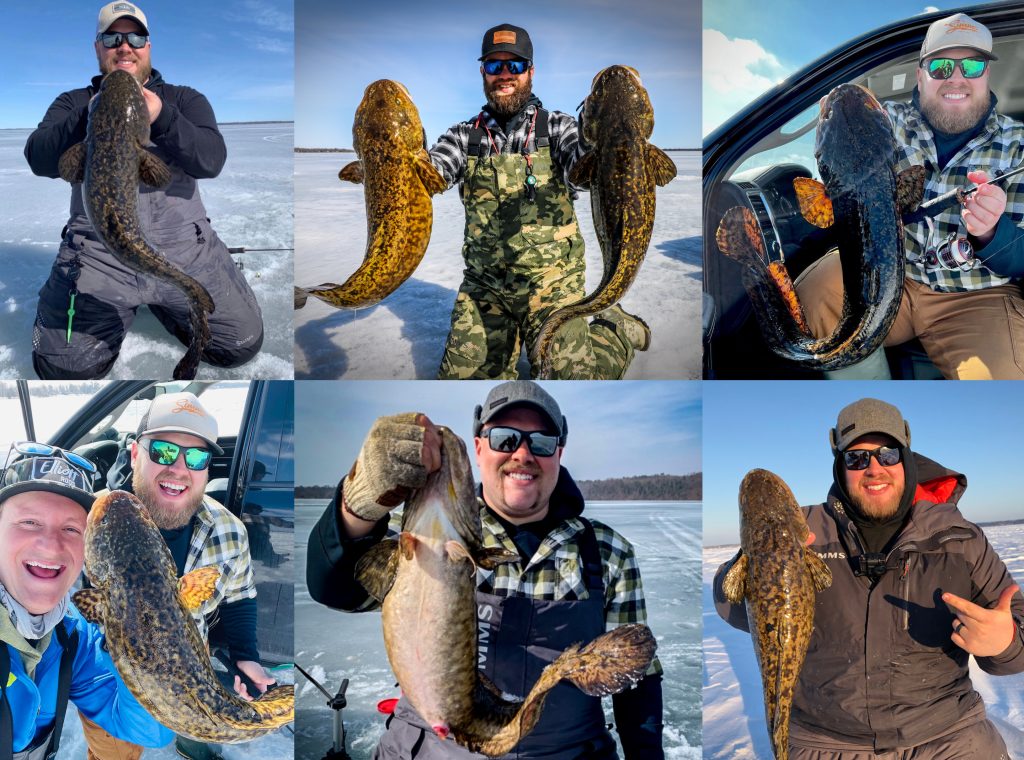
Speaking of which, if you’ve never seen how burbot spawn…you’re in for a real treat…
Seriously INSANE burbot underwater footage!!
Here’s some of the craziest underwater footage I’ve seen of any fish – especially burbs [!] – shot by the AnglingBuzz crew with an Aqua-Vu HD underwater camera in central MN.
Vid has plenty of fish catches, misses and camera bumps…but the “spawning ball” with dozens of burbot was grotesquely-awesome:
Tough to put the rod down when there’s that many on the camera.
What to catch ‘em on
One of my go-to jigging spoon is called the Trout-N-Pout Spoon by Big Nasty Tackle, which are specifically designed for eelpout (yup, for real!). Years of banging them on the bottom and I still haven’t chipped the paint. They’ve got a super compact profile compared to their weight, which provides the perfect balance of bottom-pounding ability with the necessary flutter/wobble for enticing the picky biters.
My go-to size is the 1-1/8 oz, especially when I’m fishing in that 20-40′ range. May sound ridiculously heavy, but that extra oomph allows you to pound the lake bottom to stir things up and call those nosy burbots in from a distance.
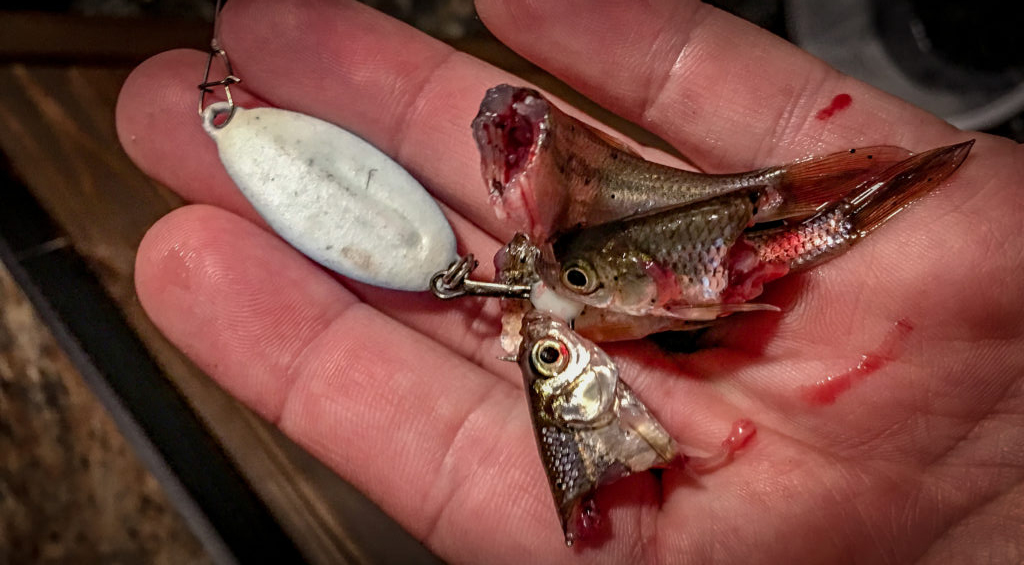
The brighter the better when it comes to burbot, and the Trout-N-Pout Spoons have the brightest, longest-lasting glow that I’ve ever seen. “Green glow” is a great all-around color, but I definitely keep a few “red glows” in my box too…it’s a different kind of bright and super intense up close.
I’ll reel up and re-glow my bait about every 10-15 minutes. Local ‘pout expert Jason Rylander put it best: “I have been playing with larger profile baits and having real nice success. Again glow is key, but these fish are not afraid to go after a big offering”.
These particular spoons also have built in rattles for added attraction. Tip ‘em with a matching pair of torn-in-half shiners or fatheads, and you’re in business – the business of burbot – which is an outstanding business to be in. Don’t be stingy on the minnows either. Pile ’em on and replace ’em often to make sure you’re getting as much scent into the water as possible.
There’s nothing wrong with the stock hooks on these spoons, but sometimes I’ll play around with swapping ’em out for a feathered treble like the #4 VMC Dressed X-Rap Treble Hook. Really like the added movement of those feathers “breathing” underwater and definitely feel it can get a few extra bites on fish that don’t come in 100% committed to eating.
One of the stickiest + beefiest hooks I’ve found to date is the VMC Hybrid Treble. A #4 or #3 size in the “short” version adds tons of extra hook gap for piling on minnows. Perfect match!
No matter what bait you’re using…
There’s this little tough-to-find thing out there called “Bait Buttons” that should be owned by all burbot’ers. Basically it’s a small rubber “button” that slips over the hook barb, and helps to keep your minnow heads from falling off. If you’re pounding bottom without ’em, say goodbye to all of those minnow heads in just a matter of minutes. With ’em, the heads will stay pinned until you either catch a fish or decide it’s time to put some freshies on.
In a pinch…take the rubber-band off your minnow bag and cut it into small squares to try and accomplish the same thing. Little more fickle, but definitely helps. Same can be said for cutting little snippets off of any Z-Man ElaZtech bait.
Rods, Reels, Line, Components…
Another cool thing about burbot fishing is you can absolutely get by with your regular walleye gear! That being said…slightly beefing-up your system for sure makes it easier to land these heavy-hitters, and feels good while doing it.
Rods: The average walleye stick is typically gonna be a 28-36″ M or MH fast-action rod. No doubt that’ll put fish topside, but if you wanna step up your burbot game – and specifically target ’em more than a couple times a year – look into getting yourself a whoopin’ stick with some extra ‘oomph!’
One of my favorite all-around “predator” rods is the Tuned Up Custom Rods 38″ Vulcan – absolutely been loving it! It’s tough to imagine a more perfect all-around burbot rod. But it also pulls double-duty for big-bait walleyes, light lake trout, and it actually makes catching big pike fun hahaha. Only problem is now I want to own more than just 1 of ’em. 😍🥵🔥 That bend, tho!
It’s a medium-heavy, moderate-fast action rod (3/16- to 3/4-oz baits) with oversized REC Recoil Ice Guides. Solid fiberglass blank means you can use and abuse this bad boy. 💪
If TUCR doesn’t have any in stock, you can always custom order your own in your favorite length and handle size/style. I went with the 8″ EVA handle and it’s a dream.
Normally I only buy ice rods that have shorter handles, but I really dig the loooonger shank on this one. About 95% of the time when I’m chasing burbs it’s done outside hole-hopping or fishing from a truck door, and that larger grip is super nice for fishing with a big mitt or glove on.
Another great rod option for HEAVY baits:
First time I played around with the 42″ heavy, fast-action Elliott Rods Greenback, I fell head-over-heels-boots for it. It may be overkill on smaller burbs…but it shines when you’re dancing 1oz+ baits for those 8- to 10-lbers. That burbot wand is solid carbon fiber but still does a great job of absorbing the thrashing/rolling movements of plus-sized burbs. Of course it still has loads of backbone [!] for driving those hooks home in deeper water. The larger-diameter eyelets also don’t ice up nearly as often.
Line: Speaking of fishing outside…. That’s another reason I’m a big fan of running 10-lb Sufix Advance mono…simply doesn’t absorb moisture like braid is prone to = more time fishing and less time stripping ice nuggets off the business end of your setup. Also has 50% LESS stretch [!] than standard monos – something about HMPE molecules, the same material braided lines are made from. Low memory and crazy soft/supple. This stuff wasn’t specifically designed for ice fishing, but I sure am digging it. And I REALLY like having a little bit of stretch to help act as a shock-absorber when the fight is on – especially at the bottom of the hole.
Swivels: Constantly pounding bottom means your spoon or jig is gonna be twisting and turning in all sorts of directions – a small #10 VMC Rolling Swivel is gonna save you from twisted line and the headaches it brings.
Leader: Tie it off to a 12-18″ fluorocarbon leader and forget about it – those swivels are so tiny you’ll hardly notice ’em. Burbs are far from line shy, so really no need to lighten up your leader. In fact, I’ll sometimes even bump up to a 12- or 14-lb leader as it helps keep the bait from fouling…stuff’s slightly stiffer and less like hair, so isn’t gonna wrap itself around the hook nearly as often. Might not seem like a big deal, until your bait fouls with a fish on the graph and you’ve gotta reel up from 30′ to fix it like you’re sprinting a 40-yard dash lol!
Snaps: My go-to snap is a size #0 VMC Crankbait Snap = not too big, not too small. The obvious reason for running a snap is it lets you quickly swap out different colors and sizes without having to re-tie. Another reason I prefer this snap specifically is it has a “teardrop” almost-rounded bottom that lets the bait do its thing – almost like you’ve got it on a loopknot. Most other snaps on the market have a ‘V’ shape that locks the bait in place….
Reels: Far as reels go, bigger is better. Can even snag one off your open-water setups that are probably collecting dust all winter. Tiny micro-spool ice reels will work, but stepping up to a size 25 or 30 is where it’s at for burbs. They simply work better for running larger diameter line (say 10+ lb), have better/smoother drag systems, and crank in more line with every turn of the handle. Comes in key when snatching fish out of deep water, or trying to keep the line tight as the fish is thrashing. Also plenty more glove/mitt friendly.
Getting ’em to bite
Completely depends on the lake, but often times burbot are primarily feed tight to bottom (especially when crayfish or even small perch are the primary forage). Skip the “5-second rule,” they don’t mind picking their dinner right up off the lake floor. I like to pound bottom several times to stir things up, then lift my spoon 6-12” off bottom and dance it in place for several seconds. This makes the glob of shiners do a tantalizing dance as they disperse scent and vibration into the water. Then I’ll do a larger lift of the rod tip at the end of the dance and let the bait crash back down into bottom before starting over.
You won’t always graph ‘em, often times your rod will load up as you go to lift your presentation off bottom. Still, you NEED to make sure to keep a close eye on your flasher. Some of your bigger bites could come through as a large, active blob 3-6′ off bottom, and would pounce on a glob of shiners raised up and placed in front of their face.
I’ve also noticed that on lakes that have a healthy population of tullibees, I’m seeing more and more burbot suspended in the middle of the water colum. And usually those cisco-eaters are waaaay bigger than average fish.
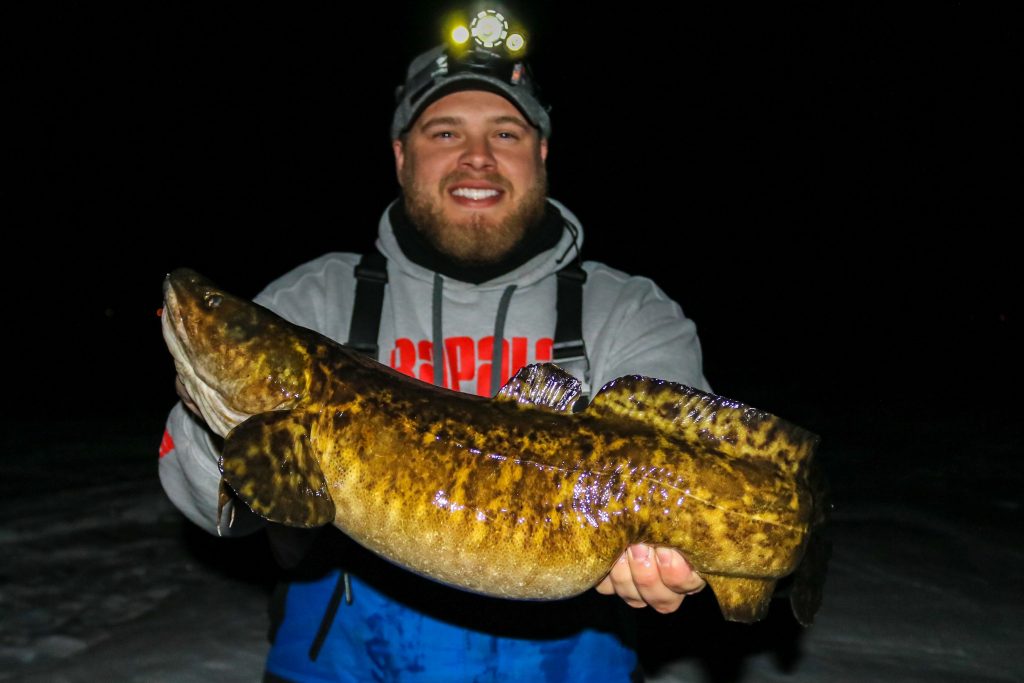
Respect the ‘pout
It used to be very common to see the random burbot lying slaughtered on the ice, frozen and wasted. This is an illegal act, one of which is very ignorant and frowned upon with any species, and eelpout are no different. Never leave a man/woman behind.
They provide exceptional table fare! Boiled or deep fried, burbot are known as the “poor man’s lobster” for a reason. If you’re not going to take the time to clean what you catch, let it go for another person to enjoy the epic battle that ‘pout offer. I realize there is [at the time of writing this] no limit on burbot, but let’s practice selective harvest. Keep the smaller males if possible and let those big ladies swim. Approximately 20% of a big females weight is thanks to her eggs. That’s a lot of baby burbs!
In my opinion…burbot are a rare, special critter…and I’d LOVE to see folks practice catch-and-release fishing and send ’em all back. Is that greedy of me? Sure. But I’m not sure there’s a single fish out there that’s more vulnerable during the spawn….
Respect the ‘pout. You’re sure to gain a newfound appreciation for these leopard-printed hand bags with shoulders after hooking up with one. Sit back, enjoy the ride, and hope your drag is set accordingly.

Burbot cleaning done right
Yes, they taste muy delicioso! Gotta clean ’em a little differently though — almost like cutting the backstraps out of a deer. Here’s how it’s done from ‘pout connoisseur Jeff Matity:
Was some grumbling in the comments section of the vid about wasting the belly meat…but there’s something you should know:
> Jeff: While I was a contract biologist with Fisheries and Oceans Canada, I poured over their burbot data from all over North America and was stopped in my tracks to find out that burbot are a real canary-in-a-coal-mine when it comes to pollution and toxic contamination of their flesh.
> For whatever reason (diet, habitat, biochemistry of the fish) burbot are specifically sensitivity to pollution and their bodies “successful” ability to mop it up from the environment.
> Mercury and other contamination accumulates in organs and fatty tissue of living things. That’s what makes burbot liver and their fatty belly meat a potential health concern.
> I eliminate the belly meat and any internal organs in my field-dressing method and NEVER recommend anyone eat the belly or gigantic liver of a burbot.
Great info, Jeff!
Btw don’t let all that nasty talk scare you away from cookin’ up a small burb…just make sure you’re not eating a bunch of their weird parts….
Some burbot-y videos
This was a truly special day. 🤯 Watching them eat on an underwater camera WILL become an addiction:
Watching them stroll thru on LiveScope can be an equally wild, frustrating, exhilarating ride lol:
That time I got pooped on. Aggressively pooped on:
For you visual learners! Throwback video breaking things down:
Now go out and catch a few slimy critters of your own!
